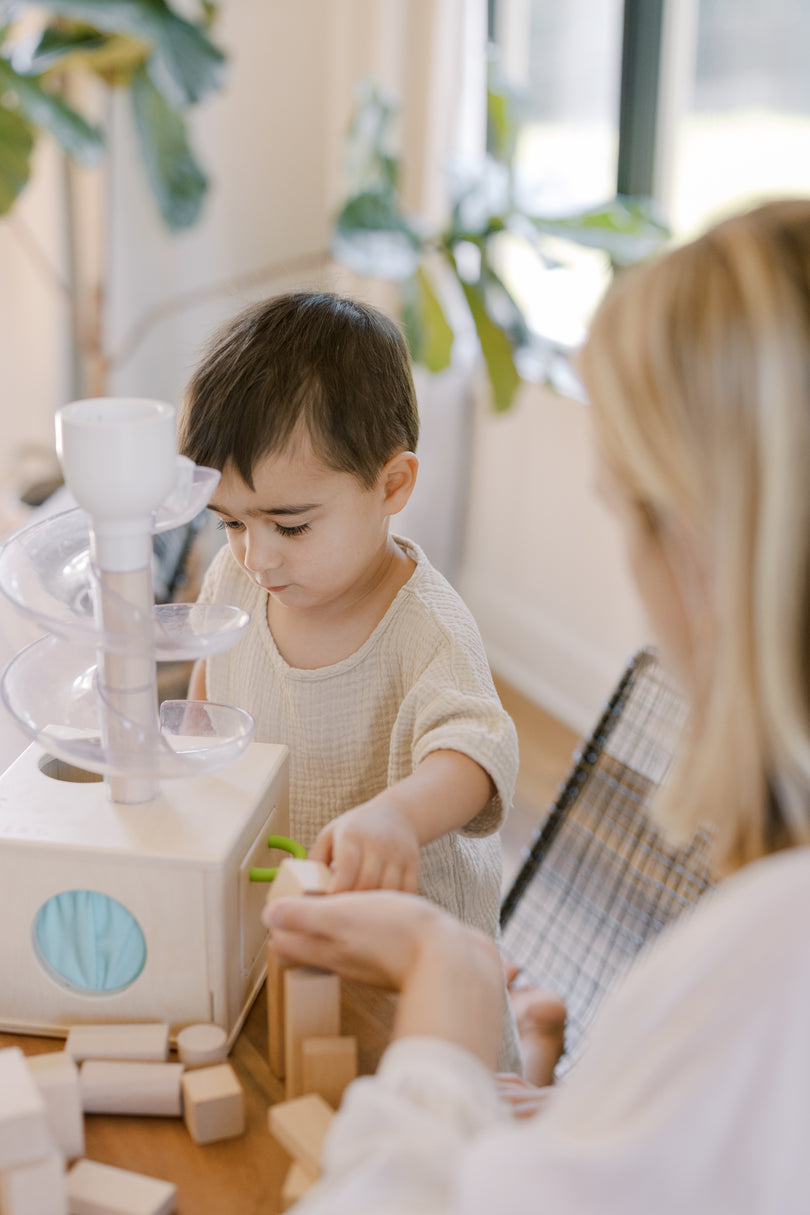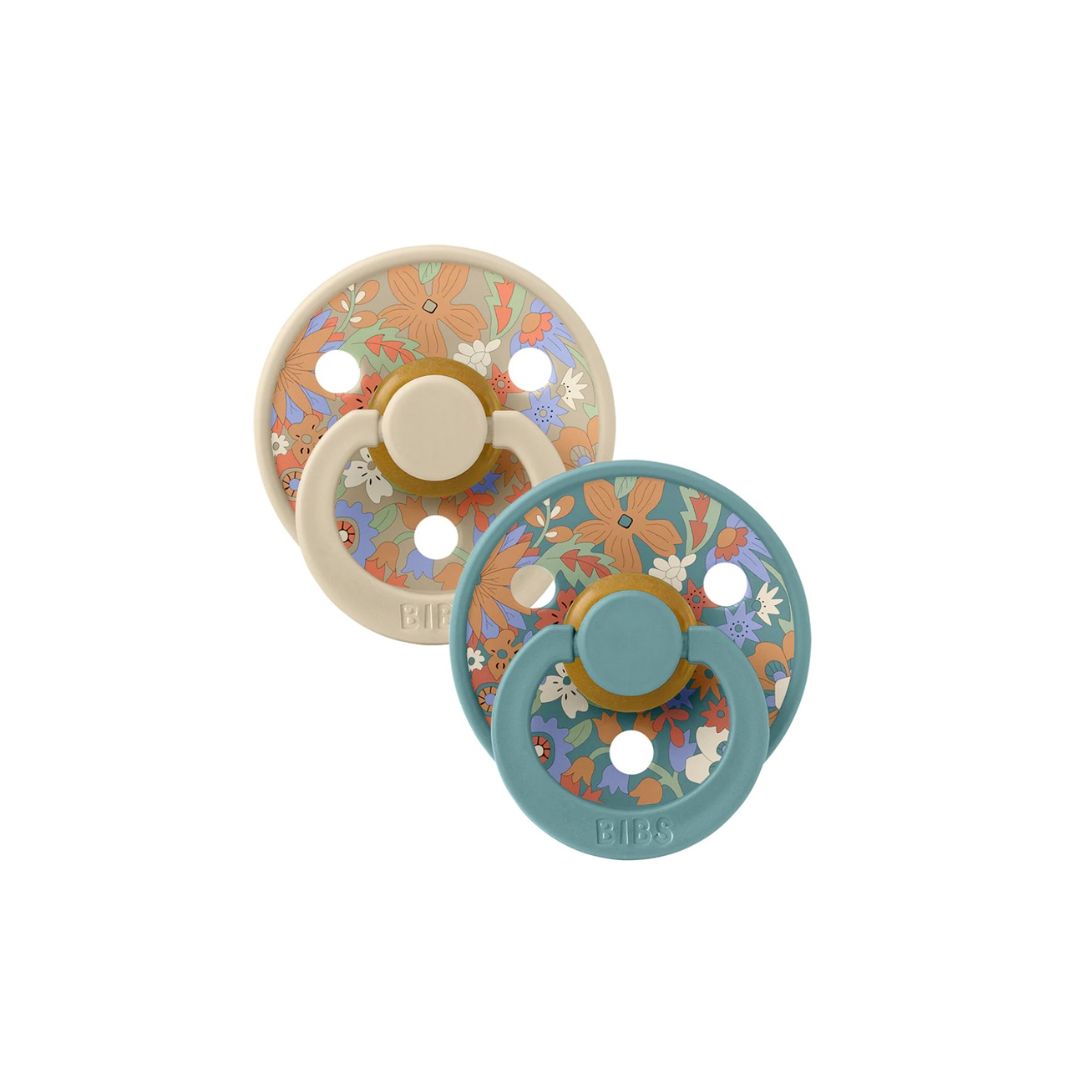
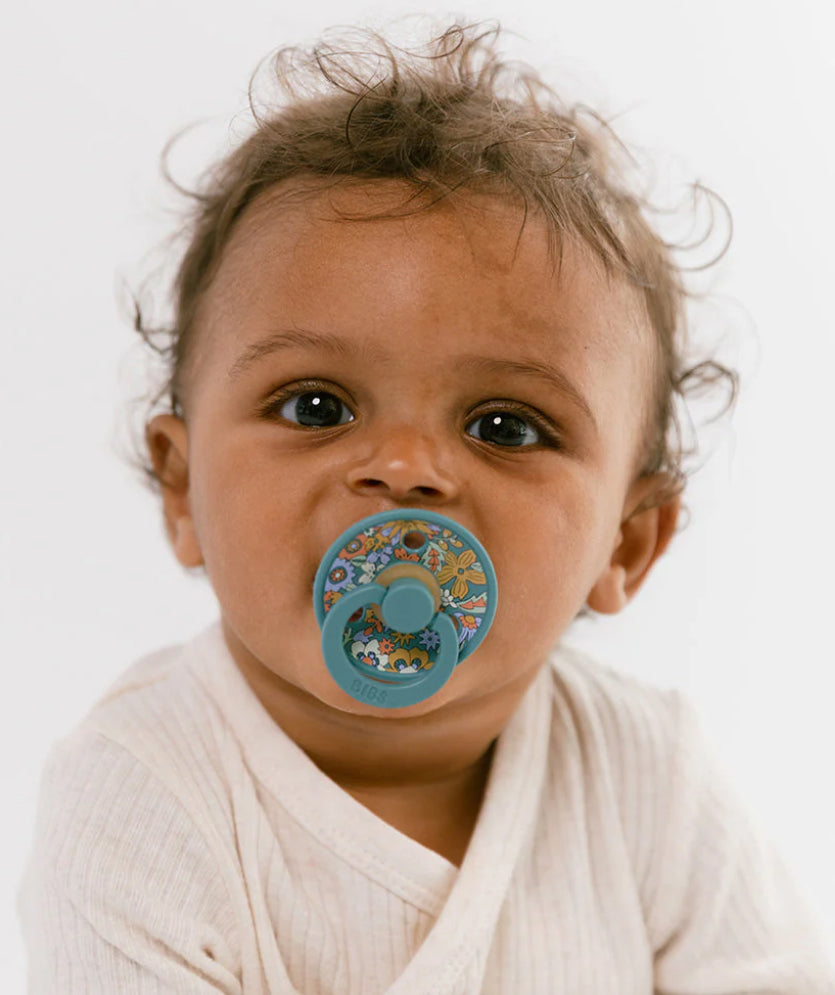
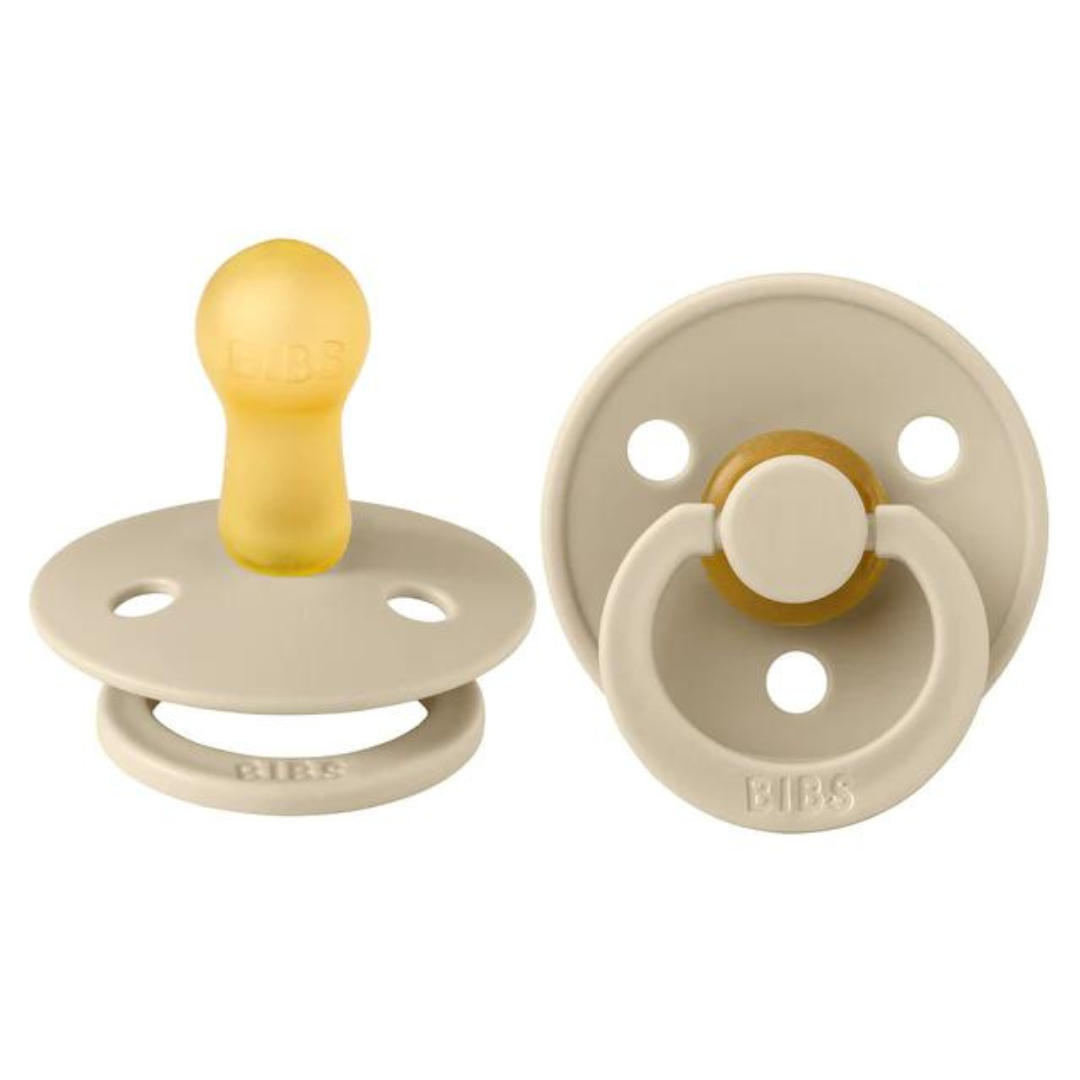
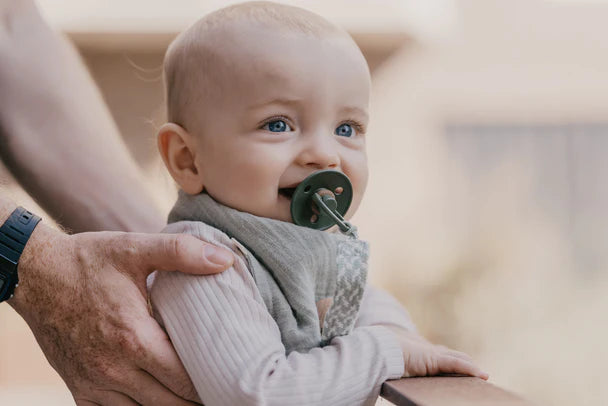
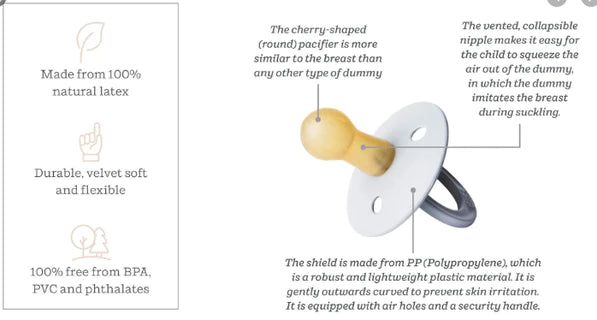
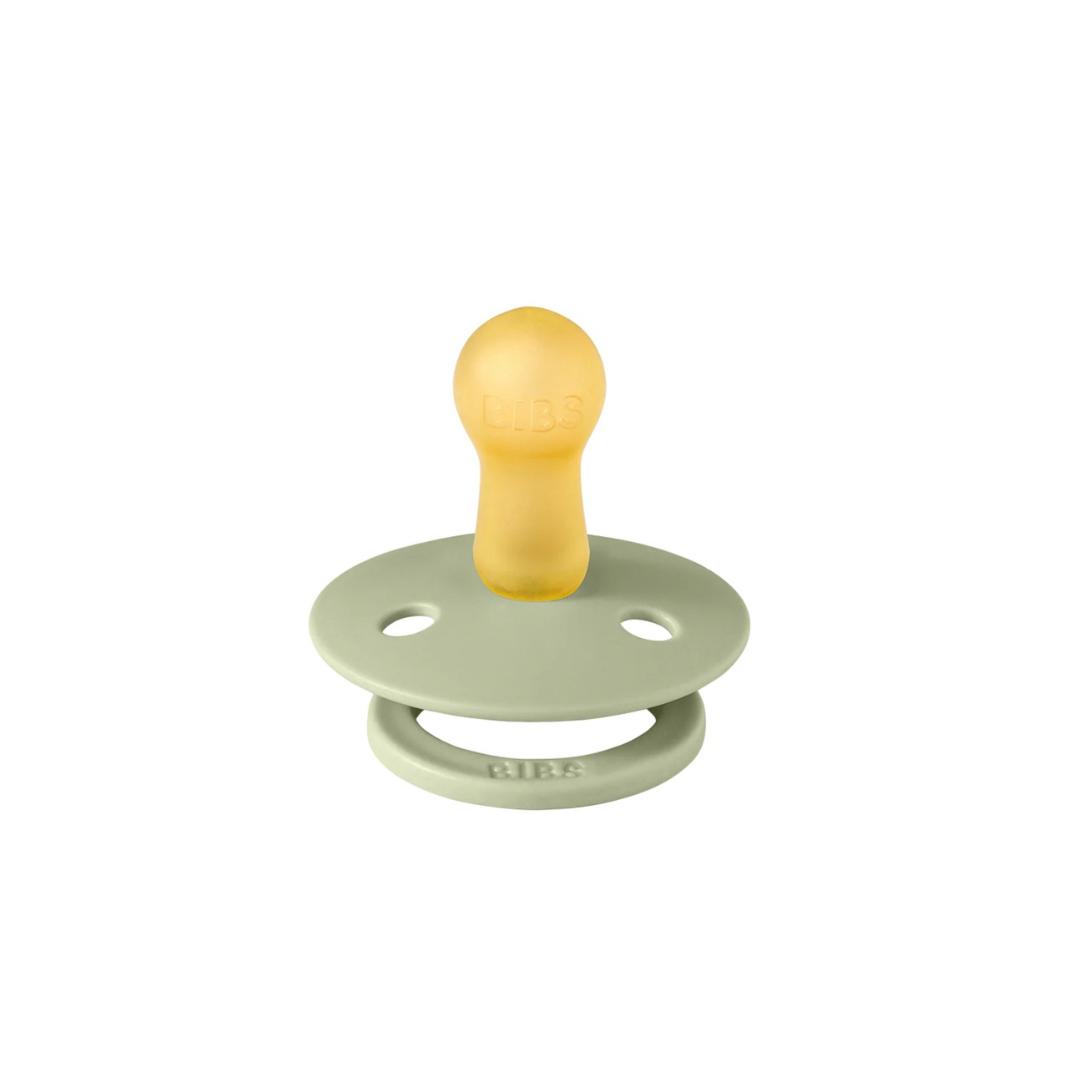
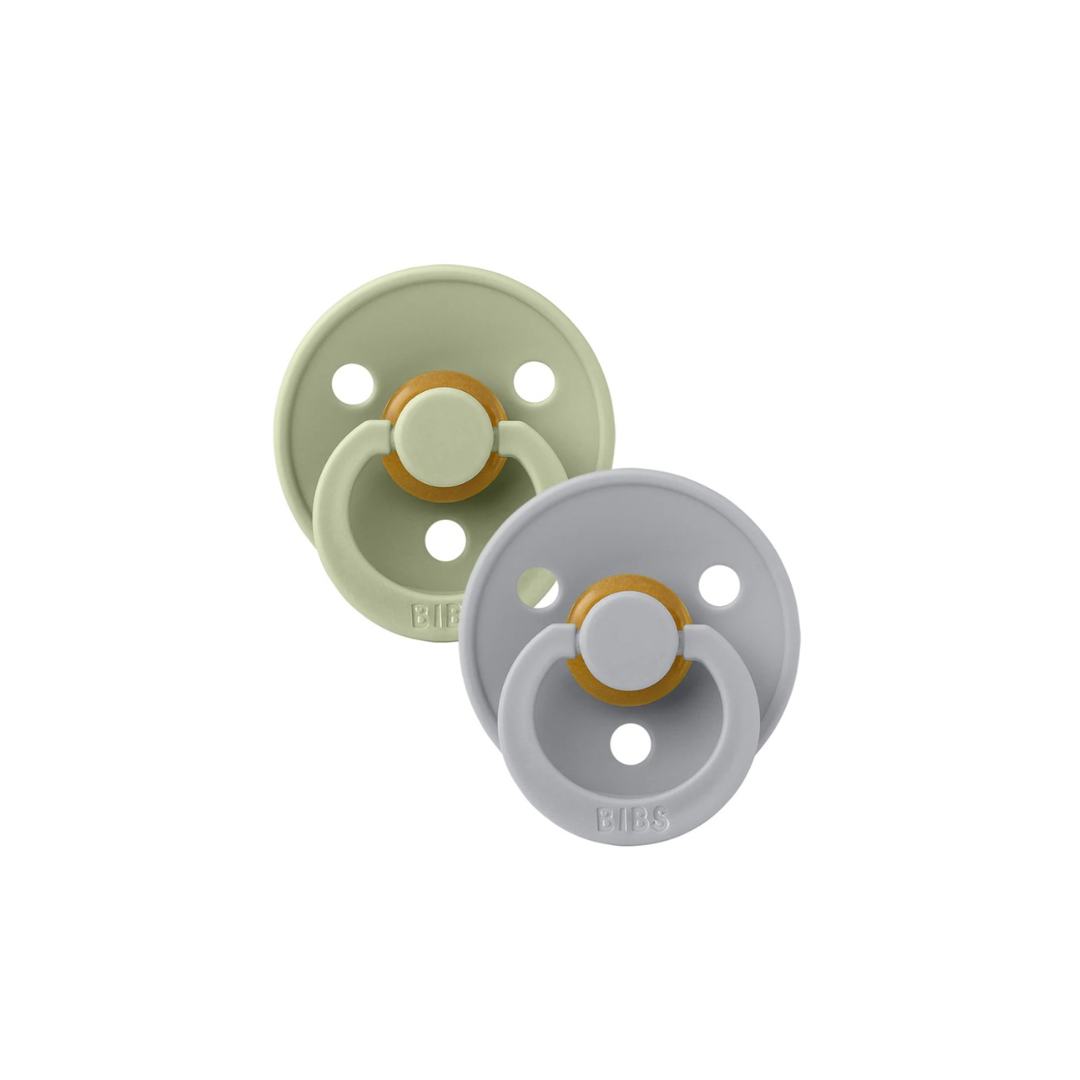
BIBS
BIBS Original Pacifiers - 2 Pack
BIBS Original Pacifiers - 2 Pack
6-18 M / Vanilla / Vanilla
Little Wares brick & mortar shop
8117 Germantown Avenue
Philadelphia PA 19118
United States
The BIBS pacifier has been a classic for moms and babies for over 30 years. Due to its naturally safe and durable rubber material, the BIBS pacifier has been trusted by moms worldwide for decades. The BIBS pacifier is 100% free from BPA, PVC and phthalates. Designed and manufactured in Denmark.
For hygienic reasons, it is recommend replacing pacifiers every 4-6 weeks.
Do always inspect the product carefully before each use. Especially when the baby has teeth. Pull the pacifier in all directions, and discard it at the first sign of damage or weakness. Only use dedicated pacifier holders, never attach other ribbons or cords to a pacifier, your baby may be strangled by them. The pacifier is not allowed to be stored in direct sunlight as it can damage the rubber.
Care Instructions:
Sterilize each pacifier before use. Bring water to a boil and pour boiling water over pacifiers. Let the pacifiers soak for approx. 5 minutes. Pick them up and let them dry. The pacifier nipples may retain water, simply squeeze the nipple to release and lay to cool and dry for 3-4 hours. If the pacifier shows any irregularities, we recommend that you discard right away. Due to our pacifiers being made with natural rubber, the nipple may expand with use.
When cleaning the pacifier, just follow these four simple steps:
1) Put the pacifiers in a clean bowl
2) Pour them with boiling water
3) Let the pacifiers soak for approx. 5 min.
4) Pick them up and let them dry
The vast majority of pacifiers are with a valve. If the nipple has a valve, be sure to squeeze excess water out of the seat part when the nipple is sufficiently cooled.
TIP: When the child is over 3 months old, you can also rinse the pacifier by placing them in a sieve and pouring them with boiling water. This method is partly faster and partly avoids water collecting inside the seat part.
Caution! We often receive inquiries from parents who have followed the National Board of Health's recommendation to cook the pacifier for 5 minutes before first use and daily afterwards. The result is broken pacifiers. DO NOT COOK. They are not meant to be boiled and are therefore destroyed by the high heat.
Instead, follow the instructions above, and you are sure to kill the bacteria without compromising the durability of the pacifier.
HOW OFTEN SHOULD I CLEAN THEM?
Part of good sucking hygiene is the frequent cleaning of the pacifiers. The younger the child, the more important it is to protect it from bacteria and to maintain good pacifier hygiene. This is due, among other things, to the fact that the child's immune system has not yet managed to get acquainted with quite a number of different bacteria, and therefore also will not have learned to "defend" against them yet.
Premature infants and babies up to 3 months need more thorough and frequent cleaning than babies over 3 months of age. Therefore, the pacifier must be cleaned more often when the child is under 3 months.
0-3 months: The pacifier must be scaled every time it has been on the floor. In addition, the pacifier must be scalded at least once a day.
3+ months: Rinse the pacifier once a day and rinse it under the cold tap if it has been on the floor.
Little Wares Thoughts: By the time you've scrolled down to read this, I know you're thinking about how much information you just read. But it's all important. Because these pacifiers are made from natural rubber latex, they age and can be ruined if you cook them in boiling water (as opposed to their recommended cleaning directions) or sterilize them in a UV machine.
We also wanted to touch on the shield of the pacifier. We try to minimize the use of plastic as much as possible, but this is one area where we feel comfortable compromising. The shield of these pacifiers is made from 100% polypropylene, which is considered to be one of the safest plastics in existence. It is completely free from BPA, PVC and phthalates, so we feel confident that is it safe being used so closely to our little ones.
Additionally, regarding pacifier use, we recommend only using it for sleeping time and weaning your child completely by age 2-3 years. If you need help with this, check out this article from trusted baby sleep consultant and former NICU nurse here.

